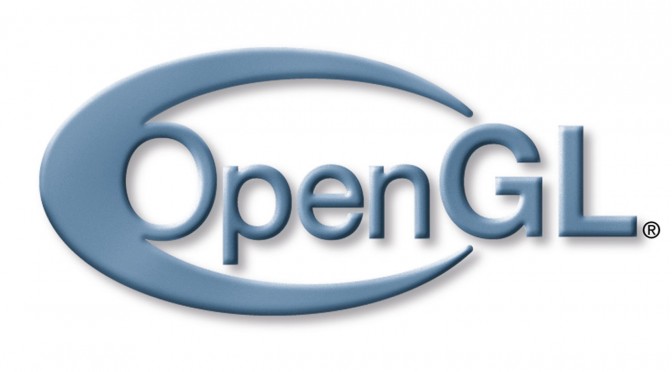Khronos, an open consortium of leading hardware and software companies, publicly released the OpenGL 4.5 specification today, bringing the very latest functionality to the industry’s most advanced 3D graphics API while maintaining full backwards compatibility, enabling applications to incrementally use new features. The full specification and reference materials are available for immediate download from the OpenGL Registry.
New functionality in the core OpenGL 4.5 specification includes:
-Direct State Access (DSA) – object accessors enable state to be queried and modified without binding objects to contexts, for increased application and middleware efficiency and flexibility;
-Flush Control – applications can control flushing of pending commands before context switching – enabling high-performance multithreaded applications;
-Robustness – providing a secure platform for applications such as WebGL browsers, including preventing a GPU reset affecting any other running applications;
-OpenGL ES 3.1 API and shader compatibility – to enable the easy development and execution of the latest OpenGL ES applications on desktop systems;
-DX11 emulation features – for easier porting of applications between OpenGL and Direct3D.
In addition, Khronos announced a call for participation today in a project to define a future open standard for high-efficiency access to graphics and compute on modern GPUs. Key directions for the new ground-up design include explicit application control over GPU and CPU workloads for performance and predictability, a multithreading-friendly API with greatly reduced overhead, a common shader program intermediate language, and a strengthened ecosystem focus that includes rigorous conformance testing. Fast-paced work on detailed proposals and designs are already underway, and any company interested to participate is strongly encouraged to join Khronos for a voice and a vote in the development process.
Raja Koduri, chief technology officer, graphics at AMD, said:
“OpenGL has played an important role in the growth of mobile, workstation and consumer graphics. AMD is tremendously excited to take a contributing role in the Next Generation OpenGL initiative as an evolution of the OpenGL standard aligned with AMD’s vision for low-overhead and multi-threaded graphics APIs.”
Johan Andersson, technical director at Frostbite – Electronic Arts, added:
“We are super excited to contribute and work with the Next Generation OpenGL Initiative, and bring our experience of low-overhead and explicit graphics APIs to build an efficient standard for multiple platforms and vendors in Khronos. This work is of critical importance to get the most out of modern GPUs on both mobile and desktop, and to make it easier to develop advanced and efficient 3D applications – enabling us to build amazing future games with Frostbite on all platforms.”
Neil Trevett, vice president mobile ecosystem at NVIDIA, also said:
“The OpenGL API ecosystem is essential in enabling developers to access GPU capabilities across NVIDIA-powered cloud, workstation, gaming, mobile and Web platforms. NVIDIA is also pleased to release beta drivers for the new OpenGL 4.5 today, enabling developers to immediately try this new functionality on NVIDIA desktop GPUs. We are also strongly committed to driving the Next Generation OpenGL Initiative to rapidly create the open standards that will prevent market fragmentation, and provide a new level of GPU access to developers across the industry.”
Valve’s Gabe Newell concluded:
“OpenGL is a critical part of enabling developers to bring the best possible products to customers across a variety of platforms. We are committed to the Next Generation OpenGL initiative and are closely collaborating with Khronos members to create a high-performance rendering interface for SteamOS and future Valve games.”
Enjoy!

John is the founder and Editor in Chief at DSOGaming. He is a PC gaming fan and highly supports the modding and indie communities. Before creating DSOGaming, John worked on numerous gaming websites. While he is a die-hard PC gamer, his gaming roots can be found on consoles. John loved – and still does – the 16-bit consoles, and considers SNES to be one of the best consoles. Still, the PC platform won him over consoles. That was mainly due to 3DFX and its iconic dedicated 3D accelerator graphics card, Voodoo 2. John has also written a higher degree thesis on the “The Evolution of PC graphics cards.”
Contact: Email

